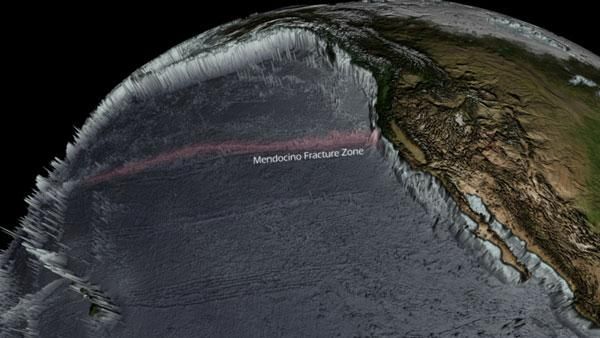
Ocean Floor Focused Tsunami on Calif. City

While most of the U.S. West Coast was spared significant damage from the tsunami that traveled some 4,500 miles (7,200 kilometers) across the Pacific Ocean from the epicenter of the 8.9 magnitude earthquake that shook Japan last week, Crescent City, Calif., wasn't as lucky.
Two geologic features combined to focus a significant amount of energy on this relatively quiet part of the California coast, according to a statement from the National Oceanic and Atmospheric Administration (NOAA).
One of these is the Mendocino Fracture Zone an oceanic plate boundary that extends westward from the San Andreas Fault and Cascadia subduction zone (two areas that cause frequent earthquakes in the United States).
In the above image, bathymetry data is used to display the ocean floor. Along the Mendocino Fracture Zone, the ocean floor is raised up due to tectonic activity and runs almost exactly towards Crescent City.
Areas with abrupt rises in the ocean floor cause the tsunami waves to slow down and increase in height. The location of the Mendocino Fracture Zone effectively focused more energy on the areas surrounding Crescent City.
In addition, the position and shape of the Crescent City harbor amplifies the energy of the tsunami.
- Japan's Tsunami: How It Happened
- Infographic: An Earthquake's Global Reach
- Photos: Japan Earthquake and Tsunami in Pictures
Sign up for the Live Science daily newsletter now
Get the world’s most fascinating discoveries delivered straight to your inbox.











